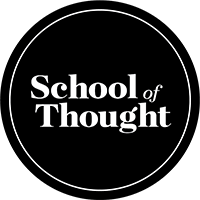The Measurement Myth: Humanizing Social Impact
Mills’ all-day conference “Creating Shared Value and Evaluating Impact” looked at measuring the impact of socially-conscious ventures. Investors need to gauge return on such programs–yet how do you assess progress on initiatives that require huge timelines?
How do you quantify the “results” of human conflict or emotional deficit?
Impact is often invisible and seemingly impossible to express. Lacy Aspill, Founding Co-Director of Moving Forward in Education, summed up the frustration: chipping away at massive social problems requires “a high level of emotional resilience” to keep believing that change is possible.
Tackling human impact ultimately requires a human approach.
A HUMAN CONNECTION
In advertising, creativity is measured to “ensure” the right message hits the right audience. Many times this analysis paralysis is the quickest way to hinder creative expression and innovation. While research has its usefulness, the best creative “results” are often the product of an organic, intuitive and free-flowing process–especially where non-traditional and grassroots tactics apply.
While measurement metrics are important to non-profits (ensuring that no investor gets swindled or beneficiary exploited) data gathering can also overly complicate the process.
Melanie Moore from Family Independence Initiative, argued that measuring “impact” is best achieved through using human and intuitive methods. Authenticity, deep-listening and empathy are vital to understanding how to connect with a target.
As a manager of impact initiatives, evaluation often comes in anthropological terms–observing change and intuiting results. Melanie Moore built her own startup See Change on the basis of using visual storytelling (through video and other media) to demonstrate impact.
Having a background in psychology (from Yale) she commented on the movement toward metrics as being short-sighted. In the field of social enterprise, we understand and “know” things intuitively. But the role of intuition has been diminished in business–something that we need to readdress.
At School of Thought we’re doing just that. Our methodologies lean heavily on a human skillset for uncovering narratives and emotional triggers–vital for storytelling.
Cognizant of the business and metric drivers for our work, intuition flows through the strategic and creative process. Guided by experience and professional knowledge, we leverage ideas and concepts that come organically into the mix.
Just as Melanie Moore applies anthropological methods to non-profit assessment, we also use ethnographic study (observing and talking to people in their natural setting) as a core component of market research–defining the attitudes and beliefs with which creative connects.
In today’s technologically efficient and data optimized world, embracing the human potential inherent in our work is what truly makes a difference.
LEARN MORE

